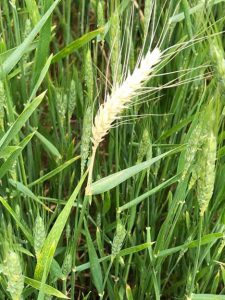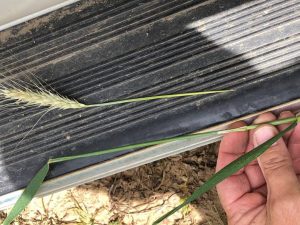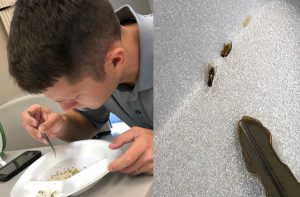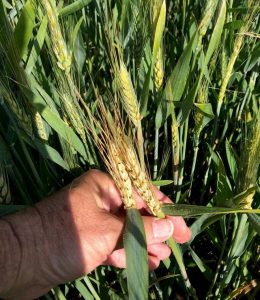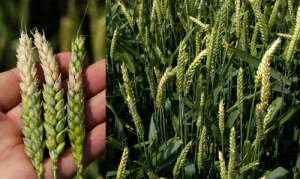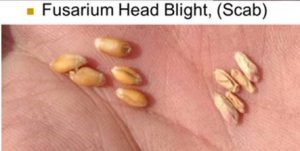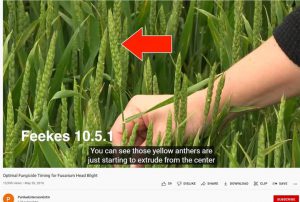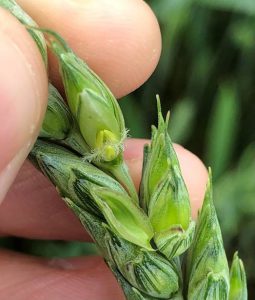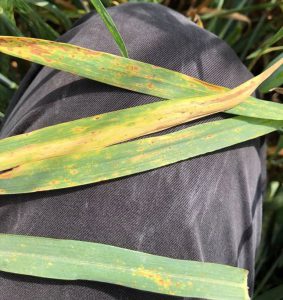Rome Ethredge – UGA Interim Grains and Soybean Agronomist
–
White Wheat Grain Heads
There are at least three reasons why we are seeing some white wheat grain heads in the field this week: insects, freeze damage, fusarium head blight. Each one is discussed below in its respective section.
–
Insects
Cody Bowling, Seminole County Agent, and Dr. David Buntin, UGA Entomologist helped solve this white head mystery where several were seen near the field edge in Seminole county.
These were caused by insect feeding on the stem; cutting off photosynthate, nutrient, and water access to the head turning it white. Cody used a sweep-net to find the adult culprits: Wheat Stem Maggots. He said they would lay eggs which hatch into larva (maggot, since it’s a fly), and then feed into the stem. Feeding occurs just above a plant node.
Below is Cody Bowling identifying the Wheat Stem Maggot flies and a closeup of a couple that he found near damage in the field with a sweep-net. A truck key is shown for size comparison.
Dr. Buntin says this is very rarely an economic problem but more of a curiosity and grasshoppers and caterpillars can sometimes cause similar damage.
–
Freeze damage
The white heads below were empty as a result of the March 13 freeze, fortunately they were a small percentage of this field.
–
Disease
Fusarium Head Blight aka Scab can cause white heads as below, often you can later dig into the head and see shriveled kernels with pinkish appearance as in the photo below on the right.
With Fusarium Head Blight often only part of head is affected but with Stem Maggot the whole head will be white. With freeze damage you can also see partial head whiteness but it will almost always be the top of the head affected due to the top being exposed to the cold first.
–
More on Wheat diseases
Dr. Alfredo Martinez, UGA Plant Pathology and I have been getting questions about timing of Fusarium fungicide spray and it is important to spray while the wheat is flowering which occurs not long after heading but requires checking the field. You can see the anthers coming out in the below photo from Purdue University. Dr. Martinez has the fungicides and rates in the pest management handbook and these fungicides are also effective on Leaf rust as well.
Here’s a link to our UGA Fusarium publication but the list of chemistries here is outdated.
Here’s a photo below by Agent Cole Moon of Bleckley county, where he dug into the recently emerged wheat head and you can see the flower parts not yet coming out so this is a good example of being a little early for the fungicide spray.
Wheat leaf rust is coming on now as well. Agent Cody Powell and I found this in Miller county on the lower leaves this week in a field that was recently sprayed so that will protect the all important flag leaf which provides most of the photosynthate to the grain.
- Federal Estate Tax and Gift Tax Limits Announced For 2026 - December 19, 2025
- Why Do I Have So Many Open Cows? Causes of Reproductive Failure - December 19, 2025
- Wiregrass Cotton Expo Offers Resources, Research, & Real Solutions for Growers in Southeast – January 22 - December 19, 2025

